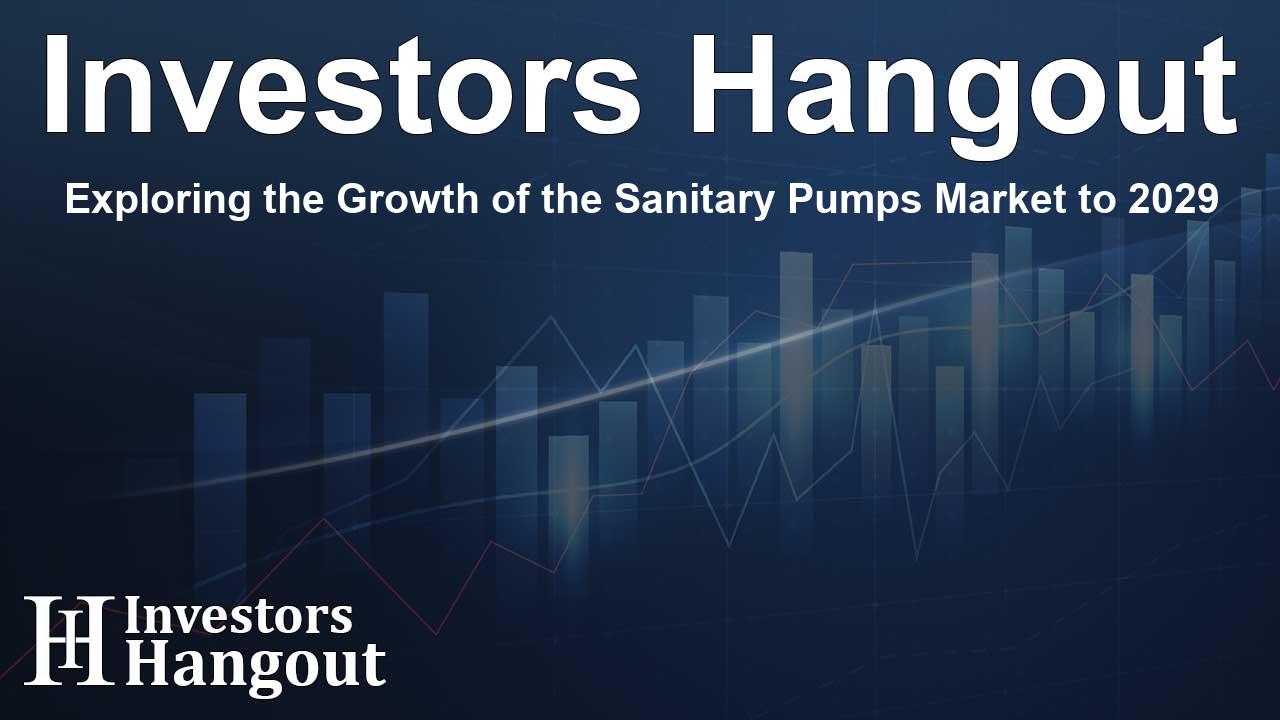Exploring the Growth of the Sanitary Pumps Market to 2029

Sanitary Pumps Market Growth Insights
The global sanitary pumps market is on an exciting trajectory, with estimates indicating a noteworthy increase of USD 566.6 million from 2025 to 2029. As industry dynamics evolve, the food and beverage sector emerges as a key player driving this growth, propelled by rising demand for pumps equipped with advanced technologies. With a projected compound annual growth rate (CAGR) of approximately 4.1%, the market is positioning itself for a prosperous future.
Emerging Trends in Sanitary Pumps
AI's Role in Market Evolution
Artificial Intelligence (AI) is at the core of transforming the sanitary pumps market. Manufacturers are focusing on energy efficiency while enhancing pump designs, integrating sensors that facilitate real-time monitoring of conditions such as vibration, temperature, and pressure. The advent of Industrial Internet of Things (IIoT) technologies is enabling optimization of operational chains, leading to automatic error detection and predictive maintenance capabilities. The intersection of digitalization and automation in industrial processes indicates a promising path ahead for the sanitary pumps market.
Technological Advancements
The increasing demand for self-priming pumps across various applications is driving the growth of the rotational and drive pumps market. The adoption of lightweight and durable materials, like aluminum and composite materials, has gained popularity, enhancing efficiency while reducing the environmental impact. Businesses are advocating for energy-efficient pumps, cementing a trend that not only addresses operational costs but also supports sustainability goals.
Challenges in the Sanitary Pumps Market
Material Price Volatility
Despite its promising outlook, the sanitary pumps market faces challenges, primarily stemming from fluctuations in raw material prices. Steel and aluminum comprise a large portion of production costs, and changes can significantly impact market dynamics. Stainless steel 316 grade, known for its high-temperature resistance and durability, is essential in production but adds to the industry's vulnerability against price variations.
Compliance and Maintenance Requirements
Another challenge within the sanitary pumps market lies in ensuring optimal functioning during the handling of wastewater and sewage. The complexity of these fluids necessitates advanced technology and materials, further intensified by compliance with stringent regulations established by governing bodies. Factors such as regular maintenance and the procurement of high-quality components are critical for smooth operational efficiency.
Market Segmentation
Understanding market segmentation is vital for grasping how the sanitary pumps sector operates. Segments include:
- Type:
- Kinetic sanitary pumps
- Positive displacement (PD) sanitary pumps
- End-user sectors:
- Food and beverage
- Pharmaceuticals and biotechnology
- Others
- Geographical regions:
- APAC
- North America
- Europe
- South America
- Middle East and Africa
Key Companies in the Market
A range of influential players contributes to the vibrancy of the sanitary pumps market. Notable companies include Alfa Laval AB, Ampco Pumps Co., Axiflow Technologies Inc., Dover Corp., and GEA Group AG, among others. Their innovations and strategies play a critical role in shaping the sector's landscape as they tackle ongoing challenges and respond to emerging opportunities.
Conclusion and Future Outlook
In conclusion, the sanitary pumps market holds significant promise for the upcoming years, characterized by technological advancements and rising demand from critical sectors like food and beverage. Industry leaders are poised to navigate challenges, leveraging innovation and efficiency to drive sustainable growth. As compliance and environmental priorities persist, the market is set for evolution, creating exciting opportunities for stakeholders engaged in this expanding industry.
Frequently Asked Questions
1. What is driving the growth of the sanitary pumps market?
The growth is primarily driven by increased demand in the food and beverage sector and advancements in technology, particularly AI integration.
2. What challenges does the sanitary pumps market face?
The market faces challenges such as fluctuations in raw material prices and strict compliance requirements related to operational standards.
3. Which materials are commonly used in the production of sanitary pumps?
Key materials include stainless steel, particularly the 316 grade for its durability and resistance to corrosion.
4. What types of pumps are included in the sanitary pumps market?
The market includes kinetic sanitary pumps and positive displacement (PD) sanitary pumps, among others.
5. How does AI impact the sanitary pumps market?
AI enhances efficiency, enables predictive maintenance, and allows real-time monitoring, driving innovation within the industry.
About Investors Hangout
Investors Hangout is a leading online stock forum for financial discussion and learning, offering a wide range of free tools and resources. It draws in traders of all levels, who exchange market knowledge, investigate trading tactics, and keep an eye on industry developments in real time. Featuring financial articles, stock message boards, quotes, charts, company profiles, and live news updates. Through cooperative learning and a wealth of informational resources, it helps users from novices creating their first portfolios to experts honing their techniques. Join Investors Hangout today: https://investorshangout.com/
Disclaimer: The content of this article is solely for general informational purposes only; it does not represent legal, financial, or investment advice. Investors Hangout does not offer financial advice; the author is not a licensed financial advisor. Consult a qualified advisor before making any financial or investment decisions based on this article. The author's interpretation of publicly available data shapes the opinions presented here; as a result, they should not be taken as advice to purchase, sell, or hold any securities mentioned or any other investments. The author does not guarantee the accuracy, completeness, or timeliness of any material, providing it "as is." Information and market conditions may change; past performance is not indicative of future outcomes. If any of the material offered here is inaccurate, please contact us for corrections.